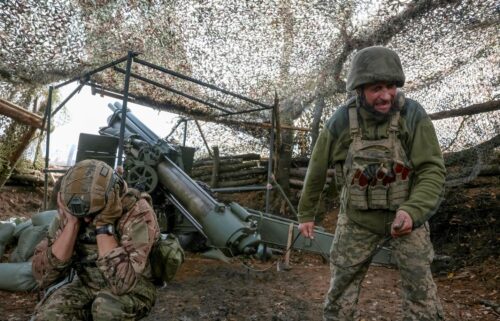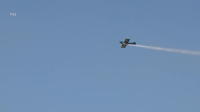Astronauts have a taco taste test using first chile peppers grown in space
By Ashley Strickland, CNN
It’s the space taco party of your dreams.
The International Space Station hosted a taco bash for astronauts on Friday as they celebrated the harvest of the first chile peppers grown in space. The crew finally had a chance to taste test the peppers after initially kicking off the plant experiment on the space station in July.
Plant Habitat-04 is one of the most complex plant experiments on the orbiting laboratory to date because peppers take much longer to grow than the previous experiments, which included various types of lettuce, flowering zinnias and even radishes.
After growing for four months, the peppers were harvested on Friday by NASA astronaut Mark Vande Hei. Next, they were sanitized before the crew settled in to taste some of the red and green chiles and take surveys about the flavor and texture.
Following the taste test, NASA astronaut Megan McArthur made her “best space tacos yet: fajita beef, rehydrated tomatoes & artichokes, and HATCH CHILE!” the astronaut shared on Twitter.
Some of the peppers will be sent back to Earth for analysis, while the chile pepper plants continue to grow on the space station. The SpaceX Crew-3 astronauts, due to launch from NASA’s Kennedy Space Center in Florida this month, will conduct a second harvest once they arrive.
The rare fresh produce means more than just some dietary variety and excitement for the astronauts. The success of this experiment also has multiple scientific implications for the future of astronaut nutrition and long-duration space missions.
And these mild peppers could turn spicier or milder depending on how much water they receive — and how living in the absence of gravity, which is stressful for plants, impacts them.
Growing plants in space
Humans have been living and working on the space station for 20 years. The bulk of their meals are prepackaged, though sometimes astronauts receive fresh treats from resupply missions. Those care packages, however, will be much more limited on longer deep space missions, including traveling to the moon or Mars.
The longer that packaged food is stored, the more it loses nutrients like vitamin C and vitamin K.
So far, astronauts have successfully grown 10 different crops on the space station since 2015 and had the chance to sample each one.
Peppers provide a great source of vitamin C, as well as other key nutrients, and these chile peppers tested well on Earth in environments simulating what the plants might experience on the space station.
Pepper plants self-pollinate, so they are easy to grow, and they are a pick-and-eat crop that doesn’t have to be cooked. They also contain low microbial levels, so they are safe to eat raw.
It took two years for researchers to settle on the Hatch chile pepper for their space experiment. The name belongs to several varieties grown in Hatch, New Mexico, and the Hatch Valley in southern New Mexico, but this specific plant is a hybrid developed by New Mexico State University, combining the Hatch Sandia pepper and the traditional Española pepper of northern New Mexico.
But the space peppers can’t officially be Hatch chile peppers because they weren’t grown in Hatch Valley.
Forty-eight seeds launched in a carrier on a resupply mission to the space station in June. The carrier was placed inside the lab’s Advanced Plant Habitat, which is about the size of a microwave. The habitat can be monitored and controlled from Kennedy Space Center in Florida, including watering, lighting and turning on fans to promote pollen transfer.
On Earth, these chiles grow to about 3 inches (7.6 centimeters) long, but their environment could have an impact on how the peppers develop in space.
Spicing things up
A side effect of life in zero gravity is that astronauts often lose some of their taste and smell, so spicy or well-seasoned foods are a favorite.
Adding fresh greens or peppers to the menu allows astronauts to liven up their regular meals. But growing and tending to the plants can also produce other benefits.
Astronauts have described the joy they get from seeing — as well as smelling and caring for — leafy green plants on the space station that remind them of Earth. The astronauts also helped hand-pollinate flowers on some of the plants.
“Growing colorful vegetables in space can have long-term benefits for physical and psychological health,” said Matt Romeyn, principal investigator for the experiment, in a statement. “We are discovering that growing plants and vegetables with colors and smells helps to improve astronauts’ well-being.”
The results of this experiment could help researchers learn how fruit development occurs in the absence of gravity and mitigate challenges for future growth experiments.
“The combination of microgravity, light quality, temperature, and rootzone moisture will all affect flavor, so it will be interesting to find out how the fruit will grow, ripen, and taste,” said LaShelle Spencer, project science team lead, in a statement. “This is important because the food astronauts eat needs to be as good as the rest of their equipment. To successfully send people to Mars and bring them back to Earth, we will not only require the most nutritious foods, but the best tasting ones as well.”
The-CNN-Wire
™ & © 2021 Cable News Network, Inc., a WarnerMedia Company. All rights reserved.



